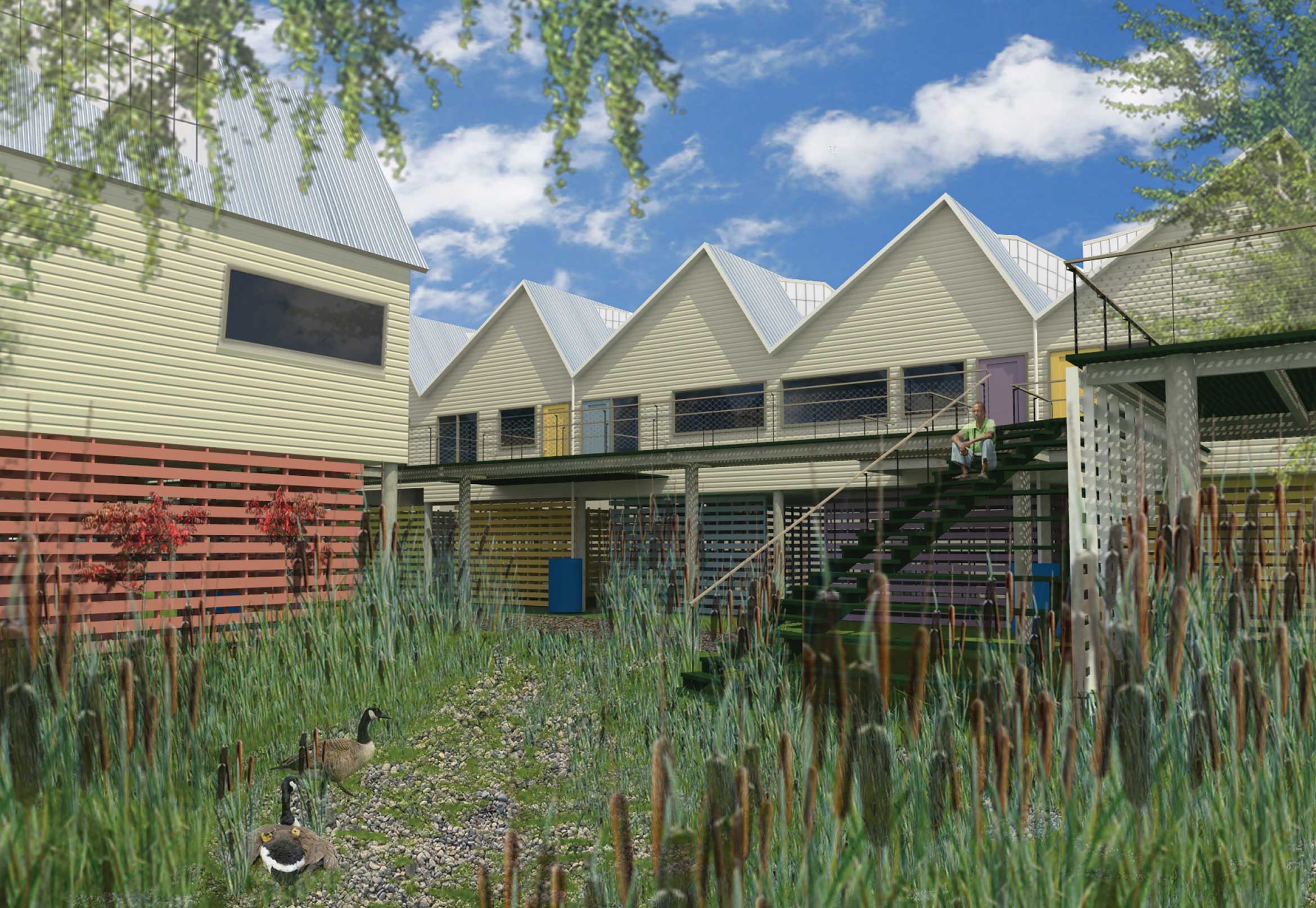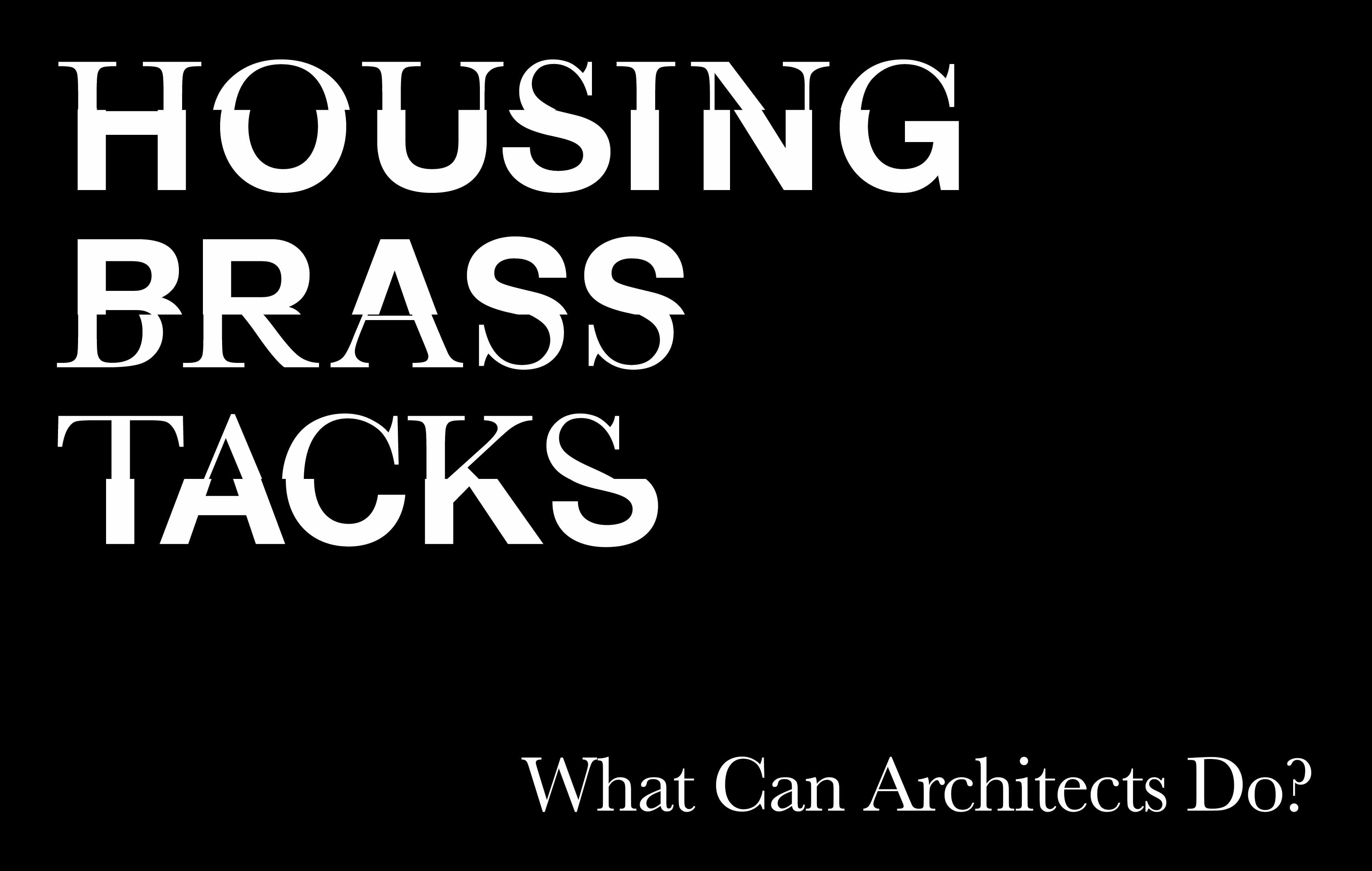
What can architects do?
Housing Brass Tacks is an informal discussion series designed as a primer on big ideas and essential mechanics in housing policy and development.
February 12, 2018
7:00 p.m.

The architect’s typical role in building or renovating housing is to answer a client’s brief, working within the confines of a prescribed budget and program. But in a world where “housing” and “crisis” have become married—shorthand for a widespread lack of affordability and the commodification of shelter—can the architect be more than a passive participant in a broken system?
For our final Brass Tacks event, we’ll debate the possibilities and limitations of the profession to address access, affordability, and inequity in housing. Are architects service providers, trapped within the strictures of larger economic and political forces, or are they complicit in perpetuating the crisis? Are other roles possible? Panelists Susanne Schindler, Deborah Gans, and Jared Della Valle—and later, the audience—will discuss the professional and ethical imperatives of architects, ways to make the existing system better, and the potential for structural change.
Beer, wine, and snacks included. Bring your questions and opinions.
Jared Della Valle is founder and CEO of Alloy. He has been a real estate professional and architect for more than 18 years and has managed the acquisition and predevelopment of more than 2 million square feet in New York City. Jared is the Board Chair of the Van Alen Institute, sits on the Board of The Architectural League of New York and the Downtown Brooklyn Partnership, and is a member of the U.S. Green Building Council. He holds a B.A. from Lehigh University and Master’s degrees in both Architecture and Construction Management from Washington University in St. Louis.
Deborah Gans, FAIA, is founder of Gans studio and Professor at Pratt Institute. She has devoted much of her professional and academic work to architecture as a social art and practice, particularly housing and its landscapes. Working in New Orleans after Katrina and in New York City after Superstorm Sandy, she has focused on emergent urban and environmental conditions. She has happily collaborated with The Architectural League, first in 1987 on the Vacant Lots study of infill fabric, and recently in the 2013 on Making Room: New Models for Housing New Yorkers jointly with the CHPC. Current projects include workforce housing in Sag Harbor and a renovation of the Brooklyn Children’s Museum.
Susanne Schindler is an architect and writer focused on the intersection of policy and design in housing. She is currently completing a PhD at ETH Zurich on the Model Cities program (1966–74) and its effects on discourses of “context” and “community” in New York architecture. From 2013 to 2016, she was lead researcher and co-curator of House Housing: An Untimely History of Architecture and Real Estate at Columbia University’s Temple Hoyne Buell Center for the Study of American Architecture, and co-author of The Art of Inequality: Architecture, Housing, and Real Estate—A Provisional Report. Susanne has taught at Parsons, Columbia, and Hunter and writes on housing for Urban Omnibus, the online publication of The Architectural League.
About Housing Brass Tacks
Understanding housing policy, finance, and regulation is daunting. One must wade through a sea of acronyms, untangle public and private interests, trace knotty financial flows, and decrypt complex bureaucracies. Making heads or tails of all this can take a lifetime, but the need to understand is urgent. We all feel New York City’s housing squeeze; increased affordable housing is a centerpiece of our mayor’s agenda; and sweeping changes in housing and community development policy may soon come at the federal level. The Architectural League is here to introduce (or refresh) our housing proficiency. Housing Brass Tacks is an informal discussion series designed as a primer on big ideas and essential mechanics in housing policy and development. We’re getting down to brass tacks: the fundamentals that structure this unwieldy topic.
Explore
Notes on New York’s housing history
Historian Deborah S. Gardner offered thoughts on housing in New York City as part of the Architectural League's 1987 Vacant Lots project.
Tower, Slab, Superblock: Paris session
A recording of one of three sessions from a conference discussing social housing.
Density diversified: Three housing types for Ravenswood, Queens
For the Making Room design study, Gans Studio designed housing for the individual resident and the larger urban context simultaneously.

